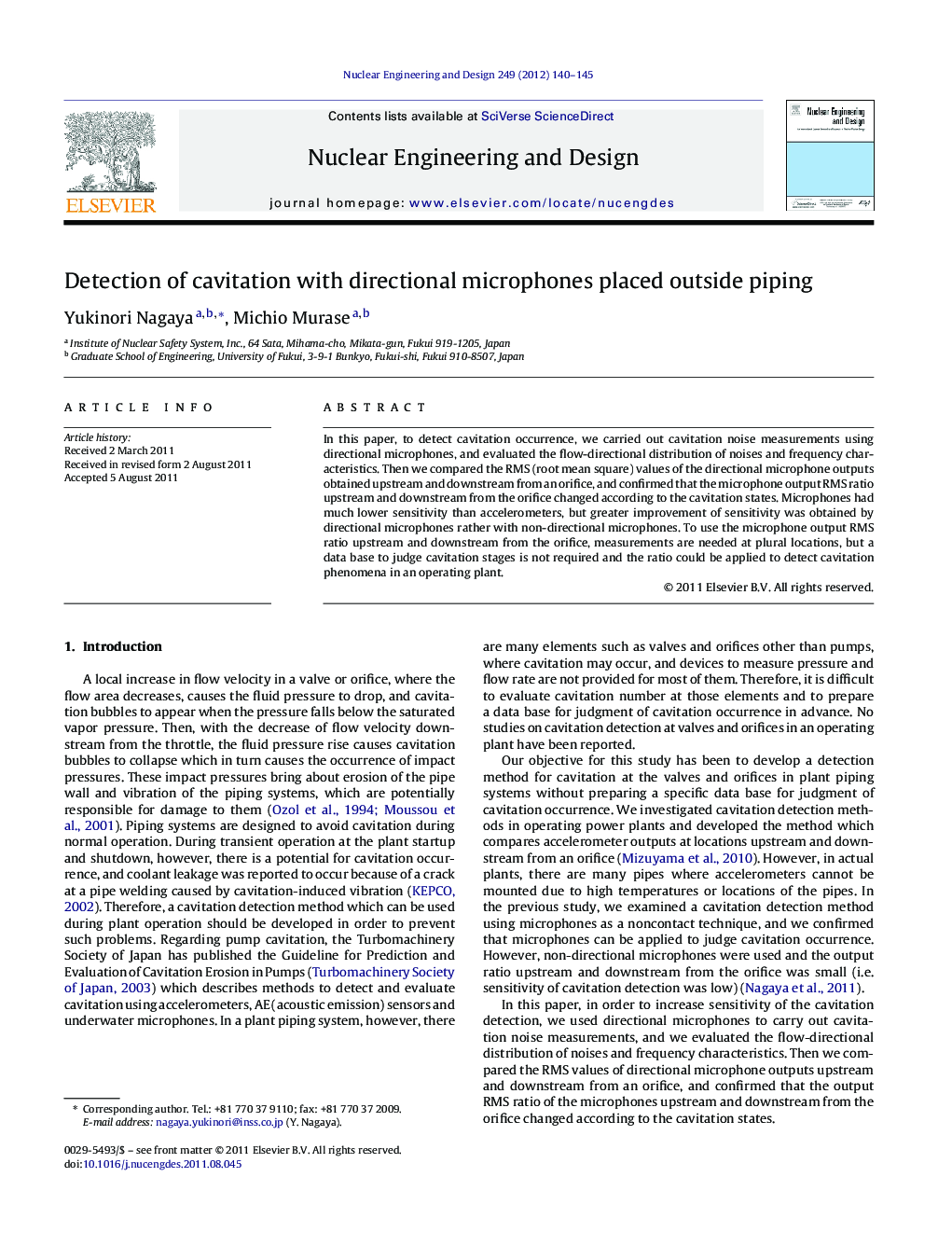| کد مقاله | کد نشریه | سال انتشار | مقاله انگلیسی | نسخه تمام متن |
|---|---|---|---|---|
| 297173 | 511750 | 2012 | 6 صفحه PDF | دانلود رایگان |

In this paper, to detect cavitation occurrence, we carried out cavitation noise measurements using directional microphones, and evaluated the flow-directional distribution of noises and frequency characteristics. Then we compared the RMS (root mean square) values of the directional microphone outputs obtained upstream and downstream from an orifice, and confirmed that the microphone output RMS ratio upstream and downstream from the orifice changed according to the cavitation states. Microphones had much lower sensitivity than accelerometers, but greater improvement of sensitivity was obtained by directional microphones rather with non-directional microphones. To use the microphone output RMS ratio upstream and downstream from the orifice, measurements are needed at plural locations, but a data base to judge cavitation stages is not required and the ratio could be applied to detect cavitation phenomena in an operating plant.
► The frequency characteristics of cavitation noise were different for each cavitation state.
► RMS ratio of the cavitation noises downstream and upstream from an orifice increased according to development of the cavitation state, and these characteristics became clearer using the directional microphones.
► This method could judge the developed cavitation state which caused erosion.
Journal: Nuclear Engineering and Design - Volume 249, August 2012, Pages 140–145